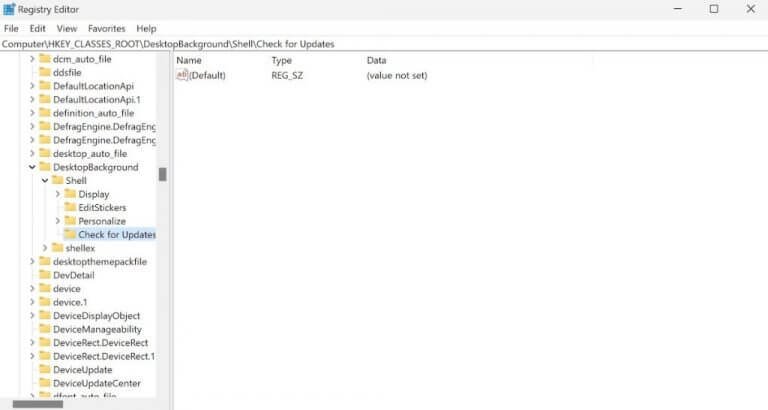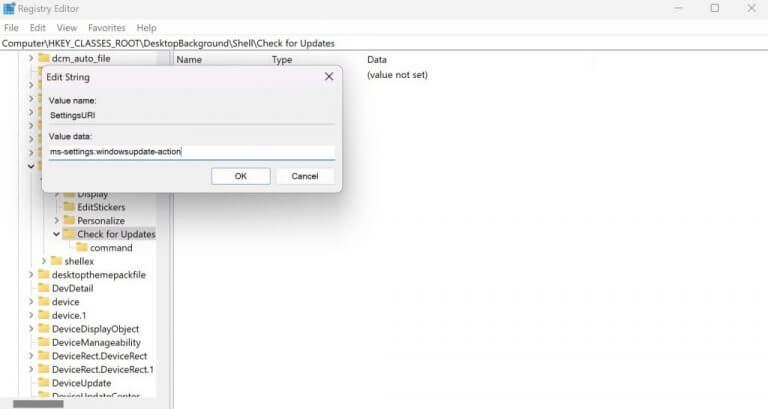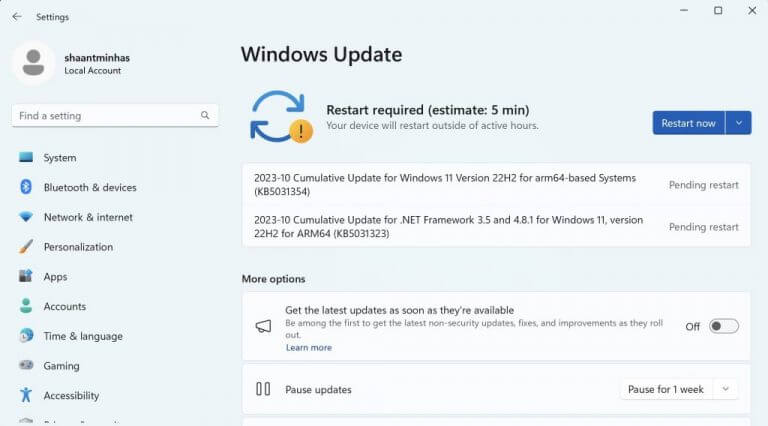Most updates come with an auto-update enabled by default these days. Whenever a new update is available, your Windows downloads and installs them on its own. That said, it’s not a bad idea to check your update status occasionally.
This is where adding a simple “Check for updates” context menu to your desktop can help. Simply click on the shortcut, and it will look up your update status in no time. So let’s see how you can do that.
How to Add ‘Check for Updates’ Context Menu on Your Windows PC
While there’s no simple point and click option to go about this, you can add a ‘Check for Updates’ menu on your PC through the Registry Editor with a few tweaks.
Before you go down that route, though, we want to warn you that changing things on your Registry editor should not be taken lightly. One mistake here, another error there, and you will soon find yourself stuck with a broken PC. To insure yourself against a blowback of this sort, we suggest you create a complete registry backup for your PC.
After you have put a backup in place, follow the below steps to add a ‘check for updates’ context menu on your Windows PC:
- Press the Windows key + R to launch the Run dialog box.
- Type in ‘regedit’ and hit Enter to launch the Registry Editor.
- On Registry Editor, head to the following address:
HKEY_CLASSES_ROOT\DesktopBackground\Shell - Now click on the Shell key and select New > Key.
- This new key will be the new shortcut. Name it as Check for Updates.
- Right-click on Check for Updates and select New > Key.
- Type in ‘command’ as the name for this new key.
- Now, click on Check for Updates, right-click anywhere on the empty space in the right and select New > String Value.
- Name the new string value as “SettingsURI” and set its value data to “ms-settings:windowsupdate-action”.
- Right-click on command key and select New > String Value.
- Name the string value as DelegateExecute and hit Enter.
- Launch the DelegateExecute string and set its Value data to {556FF0D6-A1EE-49E5-9FA4-90AE116AD744}. Finally, click on OK.
That’s it—now close the registry editor on your PC.
Head to your desktop and right-click on empty space anywhere. You should see the Context menu. From there, click on the Check for Updates option (you should see it there if everything was done correctly from the above steps).
As soon as you click on it, you will be taken over to the Windows Update tab. From there, all you have to do is click the Check for updates button, and you will be ready to go.
Adding a Context menu on your Windows PC
Adding a context menu can be slightly dicey, given that you will be dealing with your Registry editor. However, with some precautions, it’s nothing that isn’t manageable. So follow the above steps, and you can tweak your Windows context menu as well.
Alternatively, you can tweak your context menu settings with Windows with a simple third-party app such as Easy Context Menu. All you have to do is ensure the authenticity of the third-party app to ensure it doesn’t cause any future troubles.





